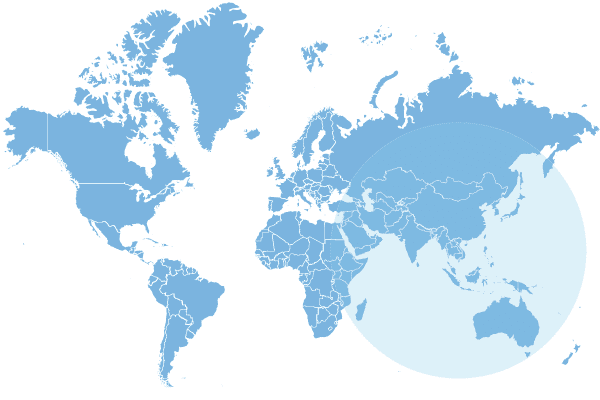38 Surprising Facts about Sudan
1. How big was Sudan?
Located in northeast Africa, Sudan (now known as North Sudan) was the largest country on the African continent before dividing.
It has a total area of 728,215 square miles (1,886,068 square kilometers).
2. It’s a world beater in many regards.
According to the ‘World Factbook’, Sudan is the 10th largest country in the world.
3. There are plenty of other nations nearby.
Its neighbors are Egypt, the Red Sea, Eritrea, Ethiopia, South Sudan, the Central African Republic, Chad, and Libya.
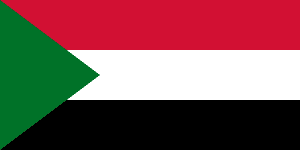
Flag of Sudan
4. What does ‘Sudan’ mean?
The country’s name means “land of the blacks” and it originates from the Arabic “bilad al-sudan”.
5. Sudan has been divided for over a decade.
In 2011, Sudan split into two countries (North Sudan and South Sudan) after the people of the south voted for independence; the last official census recording the population of Sudan in 2008 included the populations of Eastern, Western and Northern Sudan and recorded over 30 million citizens.
6. Over 1 in 200 people live in Sudan!
Sudan’s 2020 population, according to UN data, is assessed at 43,849,260 people and is equivalent to 0.56% of the total world population.
7. It’s VERY warm in Sudan.
Sudan experiences tropical weather in the south (where you can find striking mountains) and has an arid desert in the North.
8. What’s the capital of Sudan?
Khartoum is the capital of Sudan; it has an area of 8,549 square miles (22,142 square kilometers) and an approximate population of 5,274,321.
In Arabic the capital is called Al-Khurṭūm, or “Elephant’s Trunk”.
9. You’re likely to live till retirement here.
The average life span here is 65.1 years (2018).
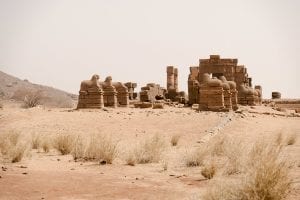
Temple of Amun in Naga, ruins of the Meroitic civilisation.
10. How can you find Sudan on the map?
The coordinates for Sudan are 15.0000° N, 32.0000°
11. What should you look for at the exchange?
Sudan’s currency is the Sudanese pound.
12. One of the world’s biggest rivers cuts through the country.
The River Nile flows from the south to the north of Sudan.
The Nile is shaped in Sudan. The White and Blue Nile are the two rivers that merge at Khartoum, becoming the Nile before flowing into Egypt.
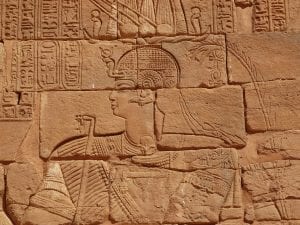
13. It’s an extremely dry country.
This country is prone to dust storms and droughts, despite the river Nile’s presence.
14. There are lots of exports and industries here.
Sudan produces cotton, millet, sugarcane, papaya, sweet potatoes, peanuts, sesame, sorghum, wheat, gum arabic, bananas, tapioca, mangoes, gold and livestock.
It has a variety of industries including oil, cotton ginning, textiles, edible oils, sugar, soap distilling, shoes, petroleum refining, cement, pharmaceuticals, armaments and car/light truck assembly.
15. New Year’s Day is Sudanese Independence Day.
January 1st is a National Holiday; the country celebrates its independence from Egypt and the UK in 1956.
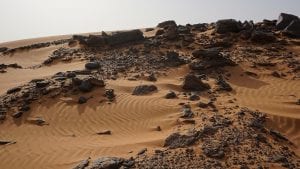
16. Civil war ended here in the 1970s.
The 17 years of civil war in Sudan ended with the validation of the Addis Ababa Agreement between the north and the south in 1972.
17. The country was one of the first on the continent to see a rise in feminism movements.
During the 1960s and 1970s, Sudan had one of the first and most active women’s movements in the African and Arab world.
18. This had a knock-on effect in government.
In 1965, Sudan was the first country to have a female parliamentarian in Africa and the Middle East and a female Minister of Health in 1974.19. Egypt doesn’t hold all the pyramids.
Surprisingly, Sudan is home to more pyramids than its neighbor; Egypt has over 100 pyramids, whereas Sudan has more than 230 (possibly more because some are unidentifiable due to weathering)!
20. What’s different about Sudanese pyramids?
The Sudanese pyramids aren’t as big or as historically significant as Egypt’s though (nevertheless, they were still found with hieroglyphics, mummies and treasures), and they weren’t restricted to members of the royal family; priests and high ranking officials would often be buried with a small pyramid atop their grave.
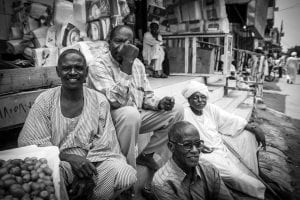
21. They are massive tourist attractions.
The Nubian Pyramids, also known as the Pyramids of Meroe are the most iconic attractions in Sudan. Meroe was once the key city of the Kingdom of Kush, governed by the Nubian kings, from the 8thcentury BC to the 4th century AD.
The Nubian Pyramids are much smaller in size than their Egyptian counterparts.
22. Need to call a mobile or landline in Sudan?
Want to call family or friends in Sudan? You’ll need to use the international dialling code +249.
23. Religious wars took place here.
In 1955, preceding Sudan’s independence there were conflicts between Muslim Arabs in the north and Christian Africans in the south.
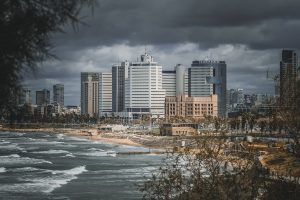
24. Sudan led the way for women’s rights in Muslim countries.
Sudan is the first Muslim and Arab country to employ female judges, cinematographers, football referees, army members, and police officers.
25. Civil war prevented potential expansion.
In 1977, oil was found in south-western Sudan, but the civil war in the 1980s and 1990s stopped most of the examination and expansion of the oil deposits.
26. There were further conflicts in the early 00s.
In February 2003, the war in Darfur began between the nomadic Arab tribes intruding upon the settled land of black-farming tribes.
When Sudan’s government took the side of the nomadic Arabs, the conflicts escalated, causing the non-Arab tribes to rebel.
According to the UN, around 400,000 people were killed and more than 2.5 million people were displaced during this civil war, also known as one of the worst conflicts in recent history.
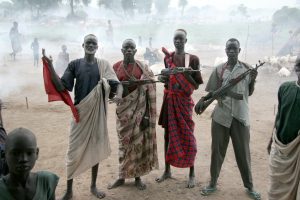
27. There are many, many languages spoken here.
Sudan has a diverse multilingual population with 114 native languages and more than 500 accents.
28. Dust clouds are intense here.
Northern Sudan is very dry and predisposed to intense dust storms that can black out the Sun and even cut visibility down to zero.
29. There are interesting marriage rules in Sudan.
The Nilotic tribes in Sudan practice ghost marriages where a man may marry a woman as a stand-in for his deceased brother. This is done to continue the family legacy as the children that are born of this union are considered offspring of the dead man.
Polygamy is widely practiced in Sudan as the man can marry once for himself as well as for his dead brothers.
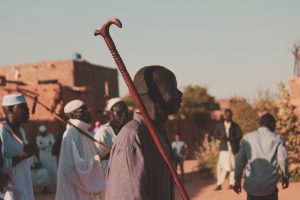
30. Even heads of state have faced prosecution here.
Omar al-Bashir, Sudan’s president is the first head of state to be accused by the International Criminal Court of war crimes.
He gave the Janjaweed (a fighting force) free control to fight against civilians in Darfur, which led to the theft of food supplies, rape, and burning of villages and mosques.
In 2009 and 2010, the court issued warrants for Sudan’s president’s arrest, but the Sudanese government refused on the grounds that it may destabilize Sudan.
31. The country follows strict religious beliefs.
Adultery and homosexuality are punishable by death under Sudan’s sharia law.
32. Stay inside the law in Sudan.
To make sure you behave in Sudan, the following offenses are punishable by lashing: engaging in premarital sex, drinking alcohol, and uttering blasphemy.
In Sudan, the conversion from Islam to Christianity is a major offense.
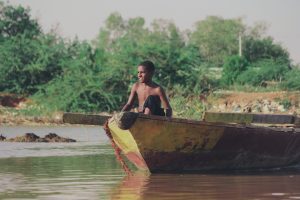
33. It’s the gum Arabic capital of the world.
The world’s largest producer (80%) of gum Arabic, is Sudan. It’s a fastening substance found in gum, shampoo, soft drinks, marshmallows, and many other common products.
34. Sudanese waters are popular with divers.
A very popular site for scuba divers in Sudan is the Blue Bell wreck. It was made from a 1977 shipwreck with a cargo of Toyota cars, trucks, and tractors, hence the name the “Toyota Wreck”.
35. You never know what you might find!
In the Red Sea of Sudan, there was an underwater village during the 1960s.
The Famous oceanographer Jacques Cousteau created the project to prove that humans can live underwater. Today, you can only see the remains of the underwater garage.
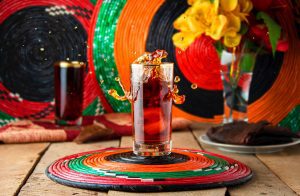
36. Sadly, there are many problems facing the citizens of Sudan.
Even today, a widespread problem in Sudan is slavery. Many children, women, and men are exposed to forced labor, sex trafficking, or child soldier recruits.
In Sudan 46.5% of the population live below the poverty line, making it one of the poorest and least developed countries in the world.
37. There are ancient sites galore here.
While in Sudan if you want to travel back in time you can visit one of the largest ancient temple complexes, the ruins of Musawarat.
The Musawarat ruins situated in the middle of the desert date back to the 3rd century BC.
38. Be sure to check out the Red Sea.
The Red Sea, with its magnificent blue-green water, unspoiled nature and stunning beaches is a must-see spot in Sudan!
Fancy some world class scuba diving? The aquatic life in the Red Sea is amazing with its untouched corals… let’s go!

FAQs about Sudan
Is Sudan dangerous to visit?
At the time of writing, it’s not recommended that you visit Sudan - civil unrest, violent crime and even kidnappings can occur regularly.
What kind of food do they eat in Sudan?
Sudanese people generally eat rice dishes, stews, bread and meat.
What’s a popular drink in Sudan?
Sudanese people enjoy drinking cinnamon tea, which is made from black tea.
Do you know any fun facts about Sudan? Share them in the comments below!
This page was last modified on July 26, 2023. Suggest an edit




